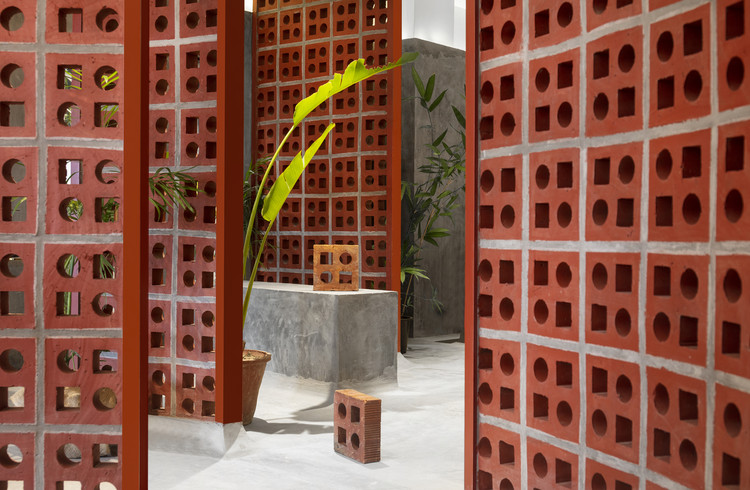BROWSE ALL FROM THIS PHOTOGRAPHER HERE
↓
April 12, 2024
https://www.archdaily.com/1015574/casa-roy-taillandier-architectes-associes Paula Pintos
March 26, 2024
© Aryeh Kornfeld + 28
Area
Area of this architecture project
Area:
4521 ft²
Year
Completion year of this architecture project
Year:
2020
Manufacturers
Brands with products used in this architecture project
Manufacturers: Jansen A-Cero , Anodite , Bercia , Dialum , +6 Interdesign Chile , Kohler , Melón Hormigones , Schüco , Silent Gliss , VitrA -6 https://www.archdaily.com/1014937/s-house-gubbins-polidura-arquitectos-plus-masarquitectos Pilar Caballero
January 19, 2024
https://www.archdaily.com/1012408/jardins-de-pouvourville-residential-complex-taillandier-architectes-associes Paula Pintos
December 18, 2023
https://www.archdaily.com/1011253/service-center-for-sparkasse-markgraflerland-in-weil-am-rhein-lro-gmbh-and-co-kg-freie-architekten-bda Paula Pintos
December 13, 2023
https://www.archdaily.com/1011012/koln-weidenpesch-church-harris-plus-kurrle-architekten-bda Andreas Luco
November 28, 2023
https://www.archdaily.com/1010287/pears-jewish-campus-tchoban-voss-architekten Paula Pintos
October 06, 2023
© Roland Halbe + 21
Area
Area of this architecture project
Area:
7193 m²
Year
Completion year of this architecture project
Year:
2021
Manufacturers
Brands with products used in this architecture project
Manufacturers: Kalzip Arqueoqurtuba Excavaciones Arqueológicas S.L. , Finsa , Forbo , GAP Grupo Aluminios de Precisión , +9 Geocisa Geotecnia y Cimientos, S.A. , Guardian , Knauf , Lledò , RIVENTI , Saint Gobain Isover , Silent Gliss , TESA , Weber -9 https://www.archdaily.com/1007761/cordoba-public-library-paredes-pedrosa-arquitectos Andreas Luco
July 23, 2023
https://www.archdaily.com/1004414/livmats-biomimetic-shell-icd-itke-university-of-stuttgart-plus-intcdc Paula Pintos
July 18, 2023
https://www.archdaily.com/1004169/cosmopoly-apartments-taillandier-architectes-associes Andreas Luco
July 18, 2023
https://www.archdaily.com/963042/perforated-architecture-20-projects-that-bring-back-the-historic-musharrabiya Dima Stouhi
June 02, 2023
© Zooey Braun Photography + 14
Area
Area of this architecture project
Area:
2350 m²
Year
Completion year of this architecture project
Year:
2021
Manufacturers
Brands with products used in this architecture project
Professionals:
GN Bauphysik Ingenieurgesellschaft mbH, Stuttgart , Werner Schwarz, Ravensburg , Kaufer + Passer GmbH & Co. KG, Tuttlingen , Fecker-Ingenieure GmbH, Konstanz , WEBER Planungsgesellschaft, Gosheim , +1
https://www.archdaily.com/1001786/marianum-school-annex-centre-for-education-lro-gmbh-and-co-kg Valeria Silva
April 01, 2023
https://www.archdaily.com/998508/dubarry-offices-taillandier-architectes-associes Elisabeth Kostina
February 24, 2023
https://www.archdaily.com/996894/historical-museum-in-frankfurt-lro-gmbh-and-co-kg-freie-architekten-bda Pilar Caballero
February 24, 2023
https://www.archdaily.com/996973/oasis-residential-tower-tchoban-voss-architekten Paula Pintos
February 23, 2023
https://www.archdaily.com/996897/munchner-theater-lro-architekten-plus-co-kg-freie-architekten Pilar Caballero
December 28, 2022
https://www.archdaily.com/969511/paicherou-aquatic-center-taillandier-architectes-associes Paula Pintos
December 21, 2022
https://www.archdaily.com/993970/centro-de-exposiciones-montblanc-haus-nieto-sobejano-arquitectos Agustina Coulleri
November 20, 2022
https://www.archdaily.com/968016/8-houses-in-alcantara-street-cristian-izquierdo-lehmann Clara Ott

















